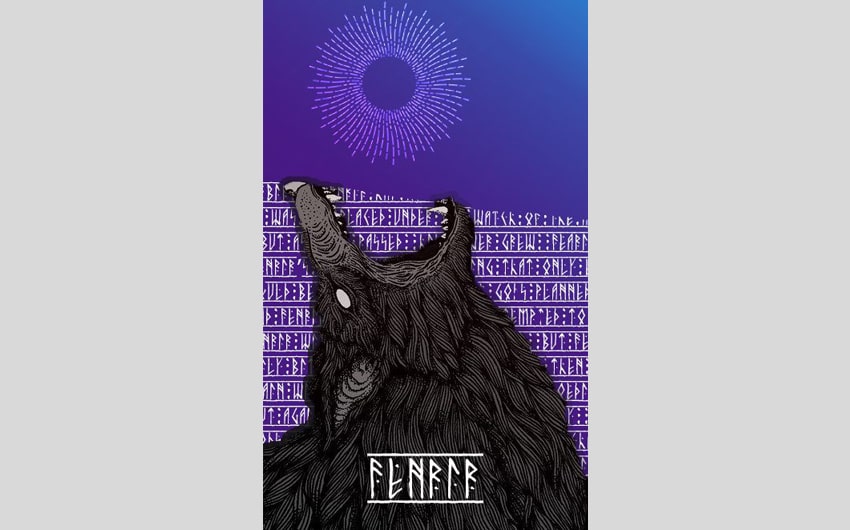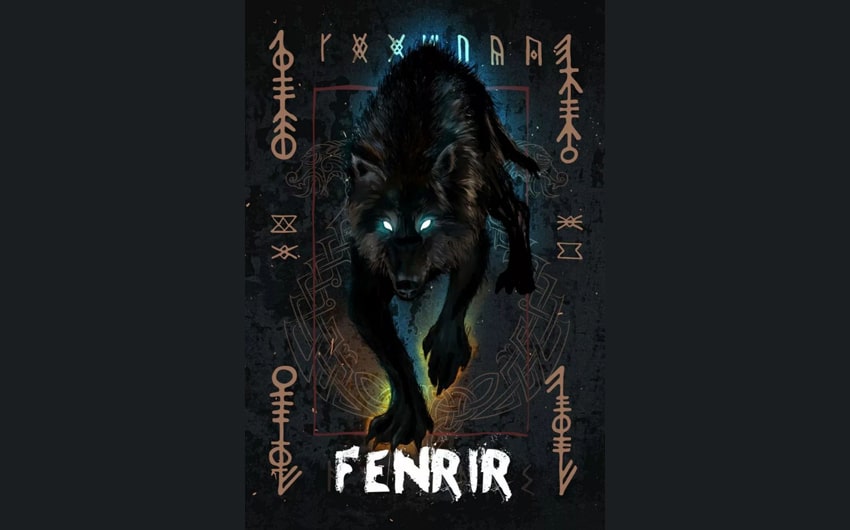The Mysterious Fenrir Name Meaning And Its Role In Lore
In myths and legends, certain names carry a deep sense of power and mystery. One such name comes from Norse mythology, belonging to a fierce and legendary wolf. Known for his strength and fate-bound role in an epic battle, this name has fascinated people for centuries. Whether you’ve come across it in books, movies, or even as a pet name, its meaning holds more than just a story—it carries symbolism that still resonates today.
If you’ve ever wondered about its origins, history, and significance, this is the perfect place to explore its rich background and cultural impact.
The Mythological Origins of Fenrir
Fenrir’s Place in Norse Mythology
Fenrir, a monstrous wolf, is one of the most infamous figures in Norse mythology. He is the son of the trickster god Loki and the giantess Angrboda, making him part of a lineage destined for chaos. Unlike other wolves in mythologies that often symbolize loyalty or protection, Fenrir represents destruction, untamed power, and inevitable fate.
Fenrir’s Growth and Imprisonment
According to the Poetic Edda and Prose Edda, Fenrir was raised among the gods in Asgard. However, as he grew at an alarming rate, the gods became fearful of his strength. Odin and the other Aesir gods decided to restrain him, first with regular chains, which he easily broke. Eventually, they sought the help of the dwarves, who crafted a magical, unbreakable ribbon called Gleipnir, made from six impossible things, including the sound of a cat’s footfall and the breath of a fish.
The Binding of Fenrir and the Loss of Tyr’s Hand
To trick Fenrir into being bound, the gods told him it was merely a test of his strength. Suspicious, Fenrir agreed only if one of the gods placed their hand in his mouth as a sign of good faith. The god Tyr bravely stepped forward, and when Fenrir realized he had been deceived, he bit off Tyr’s hand in rage. Bound and unable to free himself, he remained chained until the events of Ragnarök.
Fenrir’s Role in Ragnarök
Fenrir’s fate is tied to the end of the world. Prophecies foretell that during Ragnarök, he will break free from his bonds, bringing destruction to the gods. He is fated to kill Odin, the Allfather, in battle. However, Odin’s son, Víðarr, avenges his father’s death by slaying Fenrir. This final act cements Fenrir’s role as both a bringer of doom and a symbol of unchangeable destiny in Norse mythology.

Image source: Pinterest
Meaning and Etymology of the Name Fenrir
Origins in Old Norse Language
The name “Fenrir” comes from Old Norse, the language spoken by the Vikings and early Scandinavian peoples. The root of the name is believed to be derived from the word fen, meaning “swamp” or “marshland.” This suggests that Fenrir’s name could be interpreted as “the one from the swamp” or “the marsh-dweller.”
Alternative Translations and Interpretations
Some scholars believe that Fenrir can be roughly translated as “Fen-dweller” or “He Who Dwells in the Fens.” This interpretation aligns with the idea of Fenrir being a wild, untamed force, much like a creature lurking in a dark, unknown landscape.
Other Names and Titles for Fenrir
In some myths, Fenrir is also referred to as Fenrisúlfr, which means “Fenris Wolf” (úlfr meaning “wolf” in Old Norse). This version of his name emphasizes his lupine nature and distinguishes him from other figures in Norse mythology. Additionally, in some sagas, he is simply called “the great wolf” or “the wolf of doom,” reinforcing his fearsome reputation.
Modern Usage and Popularity of the Name Fenrir
Fenrir in Literature and Popular Media
Over time, the legend of Fenrir has inspired countless books, movies, and video games. He appears in various fantasy novels, including Neil Gaiman’s Norse Mythology and Rick Riordan’s Magnus Chase and the Gods of Asgard, where his story is adapted for modern audiences.
One of the most well-known references to Fenrir in popular media is Harry Potter, where Fenrir Greyback is a ruthless werewolf. This character embodies the savage, destructive qualities associated with the legendary Norse wolf.
Fenrir also appears in God of War: Ragnarök, Final Fantasy, The Elder Scrolls, and other video games, often portrayed as a massive, powerful wolf with ties to destruction and fate.
The Name Fenrir for Pets and People
In recent years, Fenrir has become a popular name for large dog breeds, especially those with wolf-like features, such as huskies and malamutes. Many pet owners choose the name to reflect their dog’s strength, independence, or mythological significance.
Surprisingly, some parents have also chosen Fenrir as a unique first name for children, especially among fans of Norse mythology. While uncommon, it follows the trend of mythological names becoming more mainstream.
Fenrir as a Symbol in Modern Culture
Fenrir’s image has been adopted in various forms of art, tattoos, and even brand logos. Many people choose the wolf as a tattoo symbolizing strength, defiance, and freedom. His association with fate and destiny also makes him a compelling figure in philosophical and artistic discussions.
Symbolism and Interpretations of Fenrir
Fenrir as a Symbol of Strength and Power
Throughout history, wolves have been viewed as symbols of raw power, and Fenrir is no exception. His immense strength, both physical and symbolic, makes him a representation of untamed force. Many modern interpretations see him as a metaphor for the primal side of nature—wild, fierce, and uncontrollable.
Fenrir and the Theme of Fate
One of the most significant aspects of Fenrir’s story is his connection to fate. Despite the gods’ efforts to prevent Ragnarök, they ultimately cannot stop the prophecy from unfolding. This makes Fenrir a symbol of destiny—reminding us that some events are inevitable, no matter how much we try to prevent them.
This theme resonates with people today who struggle with the idea of fate versus free will. Is our future already written, or do we have control over our own paths? Fenrir’s story offers a thought-provoking perspective on this eternal debate.
Fenrir as a Representation of Chaos and Rebellion
While some view Fenrir as a villainous figure, others see him as a symbol of resistance against oppression. The gods feared his power and sought to control him, but he refused to submit. Some modern interpretations depict him as a force of rebellion, standing against tyranny and control.
This idea makes Fenrir a popular figure in alternative and countercultural movements, where he is seen as an icon of freedom and defiance against authority.
Fenrir’s Dark Symbolism: Fear and Destruction
Of course, Fenrir’s legend is also associated with destruction and fear. In Norse myths, his escape marks the beginning of the end, making him a harbinger of chaos. Because of this, he can represent unpredictability, danger, or the forces of nature that humanity cannot control.
In psychological terms, Fenrir can be linked to the concept of the “shadow self” in Jungian psychology—the wild, suppressed part of ourselves that we may fear but must eventually confront.
Featured image source: Pinterest







